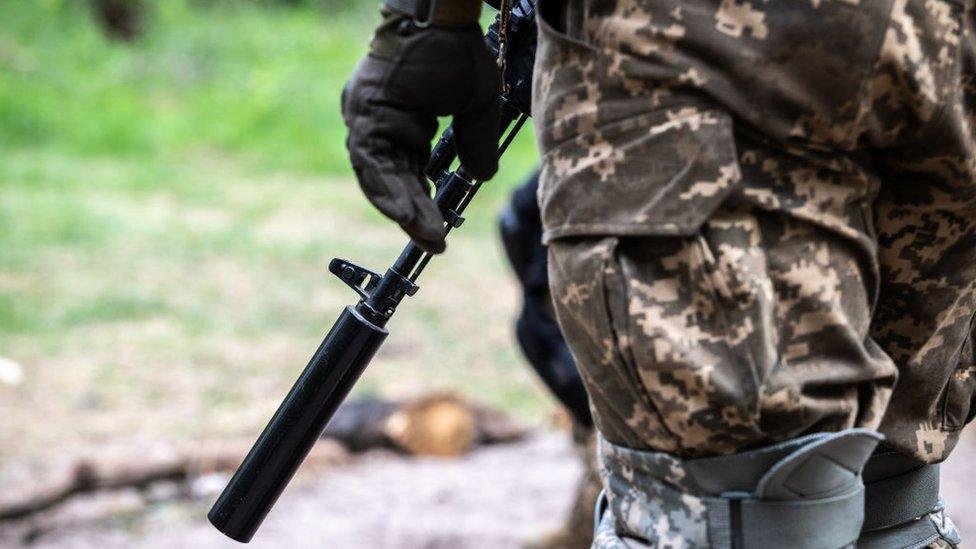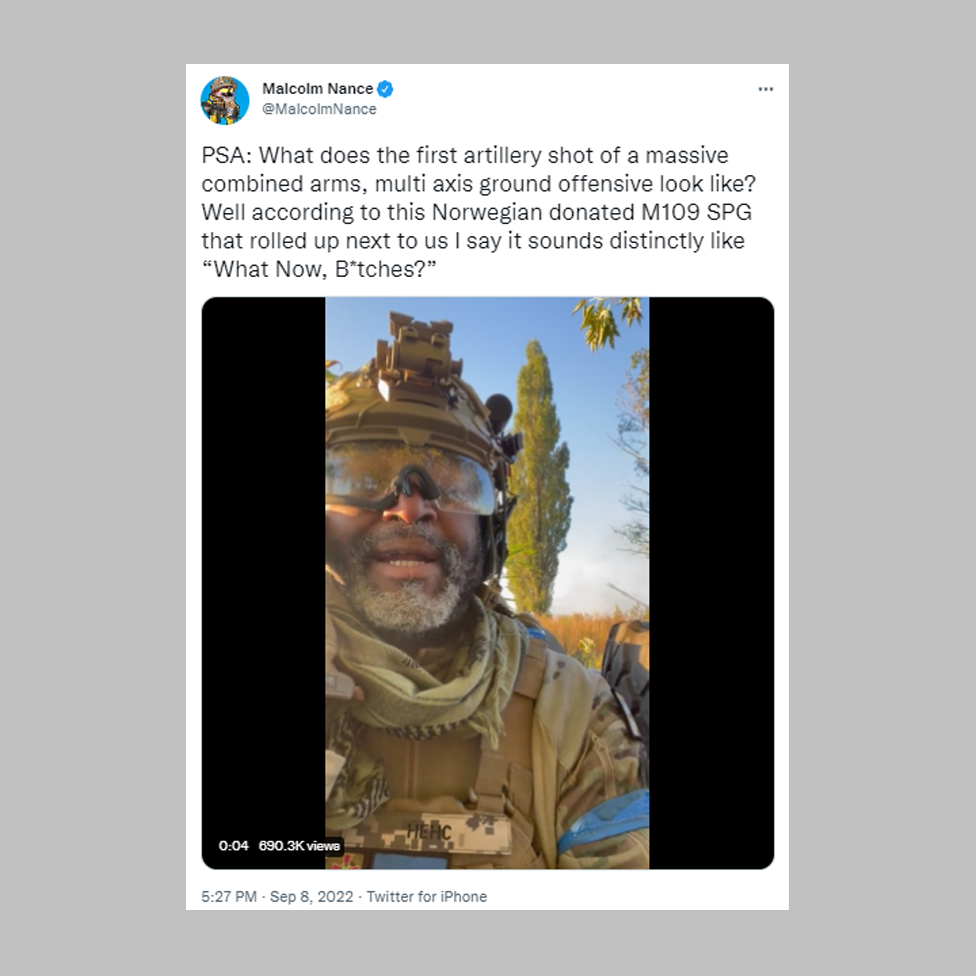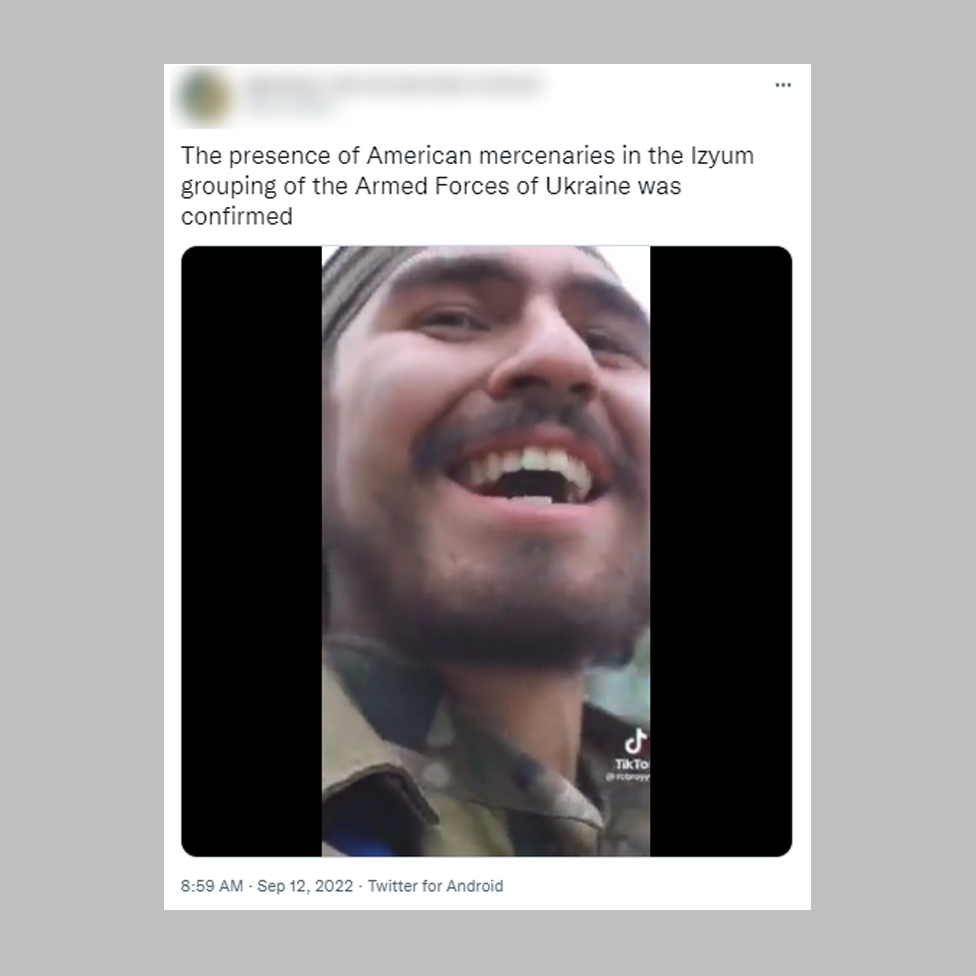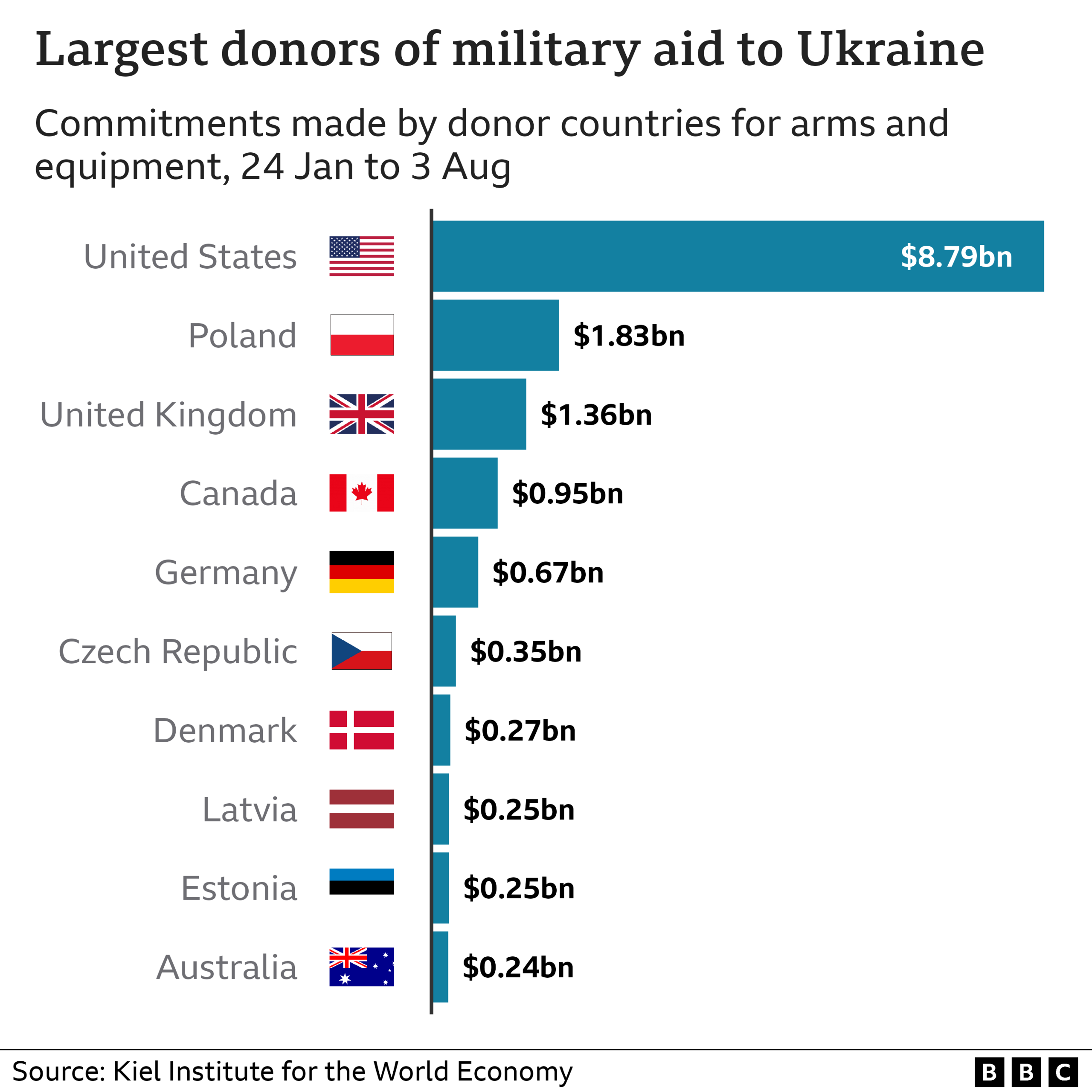War in Ukraine: Fact-checking Russian claims that Nato troops are fighting in Ukraine
- Published

Russian President Vladimir Putin says there are military units in Ukraine "under the de-facto command of Western advisers".
Claims have also appeared on Russian television and social media channels that Nato troops are actively involved in the war.
Nato member countries have been providing weaponry and logistical support, but have said they aren't sending troops into Ukraine, which is not a member of the alliance.
We've looked at the evidence provided for these claims of Nato boots on the ground in Ukraine.
What is being claimed?
In his national address on 21 September, President Putin said: "The Kyiv regime has launched new gangs of foreign mercenaries and nationalists, military units trained to Nato standards and under the de-facto command of Western advisers."
It's well known that foreign fighters have joined Ukrainian military units. However, claims are being made by Russian officials and media outlets of serving Nato troops on the ground in Ukraine.
On 13 September, Ruslan Ostashko, the host of Vremya Pokazhet (Time Will Tell) on Russia's Channel One said: "In the grand scheme of things, Ukrainian soldiers are there more for appearances, for having photos taken and uploading videos to TikTok, but it's mainly Nato troops fighting there."

Ruslan Ostashko is the host of a daily talk show on Russia's Channel One
Throughout the programme, footage taken from social media of foreigners allegedly fighting in Ukraine was shown as "evidence" of Nato boots on the ground.
Andrei Marochko, a military spokesman for the self-proclaimed Luhansk People's Republic (LPR) in the east of Ukraine, told Russian state-owned news agency RIA Novosti, external: "Our intelligence agencies revealed the arrival of regular Nato officers in the Kharkiv region.
"The purpose of their trip to this area is to organise interaction between foreign and Ukrainian units."
Mr Marochko has also told Russian state TV that Nato officers have arrived in Kramatorsk, a city in the Donetsk region of Ukraine.
Other claims are more generally about the presence of foreign fighters and don't make the direct connection to Nato - but leave the link implied.
For example, Vladimir Kornilov, a columnist for RIA Novosti, has said there had been a "dramatic increase in video footage of people who've come to 'liberate' Izyum, with English being spoken."
What evidence is being given?
It's important to make a clear distinction between those foreign fighters who've travelled independently to Ukraine and troops deployed by Nato member countries.
Russian media outlets haven't provided evidence of serving Nato personnel on the ground, only pointing to the presence of individual foreign fighters on the battlefield.
One of the fighters shown on the Vremya Pokazhet television programme is Malcolm Nance, a former US naval officer, who has regularly posted videos of himself in Ukraine over recent months.
One video, highlighted in the TV programme, shows Mr Nance with an artillery battery behind him, firing what he describes as "the first artillery shot of a massive combined arms, multi-axis ground offensive."

With over a million followers on Twitter, there's very little that could be considered covert about Mr Nance's presence in Ukraine.
He is not currently serving in the US military and back in April, he shared online that he had joined the Ukrainian Foreign Legion.
A second individual identified in pro-Russian social media posts is another American, Rob-Roy Lane, who grew up in the US state of Idaho.
Mr Lane also regularly posts online videos of himself embedded with a Ukrainian military unit and names several other foreign volunteers in the team. These videos have been widely shared on pro-Russian social media channels.

There's no online evidence to suggest he has any previous military experience. The US Department of Defense has not responded to requests for comment about his involvement with American military forces.
On his social media account, Mr Lane names several other members in his unit including two British nationals.
The UK's Ministry of Defence said it would not comment on the service records of former personnel, or on their activities in conflict zones.
What support is Nato giving?
Nato member countries are providing large quantities of sophisticated weaponry and logistical support to Ukraine, with the United States by far the largest donor.
This equipment includes several weapon systems which are believed to have played key roles in the conflict so far, such as long-range rocket launchers and anti-tank weapons.
And there has also been Western media speculation that Nato members have been helping both with intelligence and the selection of military targets.

There are around 40,000 Nato troops stationed in alliance member countries in the region, such as in the Baltic states and Poland, with another 300,000 troops on high alert in response to Russia's invasion.
Extensive training of Ukrainian forces by Nato members has been taking place outside the country, but no Nato member country has said it has contributed military personnel to fight in Ukraine.
"There is no evidence of Nato ground forces participating in Ukraine," says Edward Arnold at the Royal United Services Institute (Rusi), a defence and security think tank.
"Nor of Nato commanders directing Ukrainian units on the battlefield," he adds. "There is also a very low likelihood of this happening in the future as Nato seeks to mitigate escalation risks."
